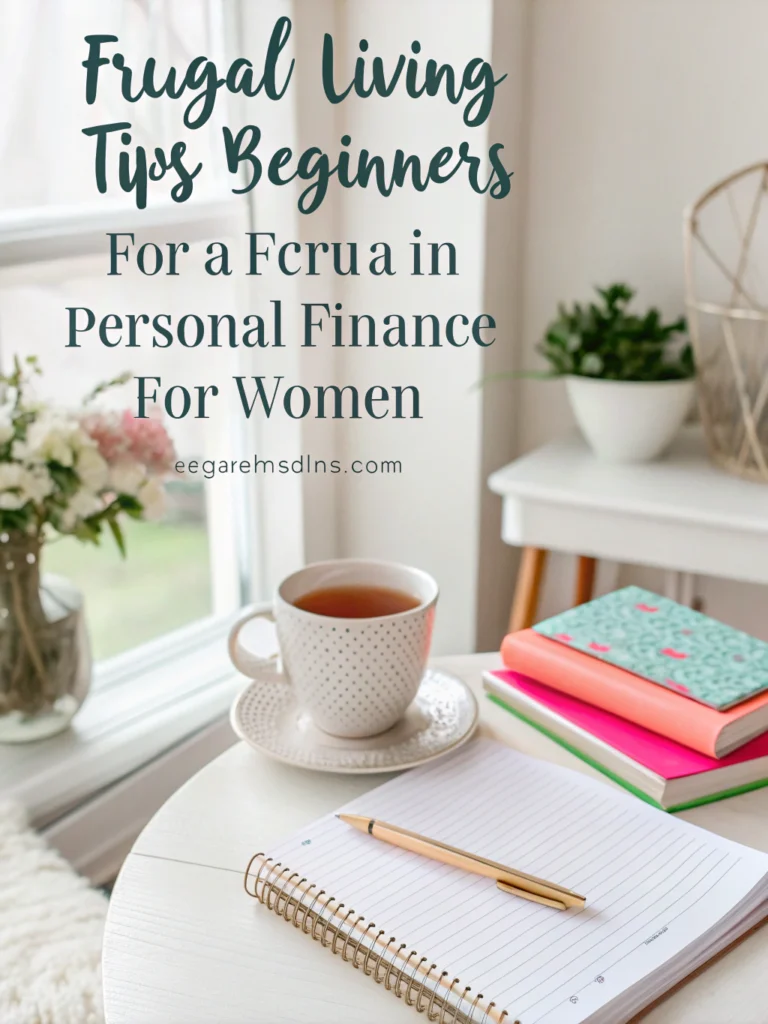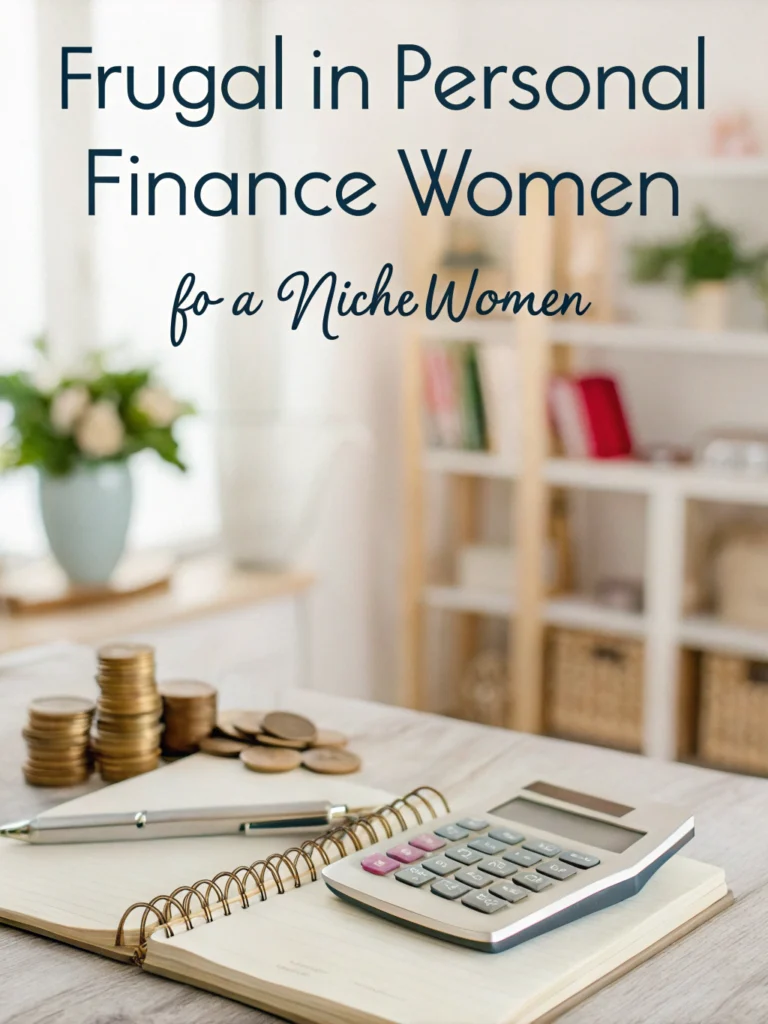Ever looked at your bank account after payday and wondered where all your money went? Yeah, me too. It’s like money has wings these days, right? But here’s the thing: Frugal Living isn’t about being cheap or depriving yourself of joy. It’s about taking control of your finances so you can actually afford the life you want—without drowning in debt or living paycheck to paycheck.
The truth is, Frugal Living is the not-so-secret weapon that millionaires and regular folks alike use to build wealth. In this post, you’ll discover exactly why embracing a frugal lifestyle is your golden ticket to financial freedom, and how simple changes can transform your bank balance from “yikes” to “nice!” 🙂
Table of Contents
No time to read the whole post?
Here’s the quick recap: Frugal Living isn’t about sacrifice—it’s about smart spending that aligns with your values. By cutting unnecessary expenses, avoiding debt traps, building savings, and making intentional choices, you create breathing room in your budget. This breathing room becomes your pathway to financial independence, early retirement, and the freedom to live life on your own terms. We’ll cover why frugality beats high income, practical money-saving strategies, and how this lifestyle shift creates long-term wealth and peace of mind.
What Frugal Living Actually Means (Spoiler: It’s Not Being Cheap)
Let’s clear something up right now. Frugal living gets a bad rap because people confuse it with being cheap. But there’s a massive difference.
Cheap people won’t spend money even when it matters. They’ll skip necessary car maintenance, buy the lowest quality everything, and generally make decisions that cost them more in the long run.
Frugal people, on the other hand, spend money strategically. They invest in quality when it counts, avoid waste, and prioritize value over price tags. They ask themselves: “Do I really need this?” and “Is there a smarter way to get this?”
Frugal Living means being intentional with every dollar. It’s about cutting the fat from your budget—those subscriptions you forgot about, the daily coffee runs that add up to $150/month, the impulse purchases that seemed like a great idea at the time.
According to research, the average American wastes about $18,000 per year on non-essential purchases. Imagine redirecting even half of that toward your financial goals. That’s the power of frugality.
Why Your Income Doesn’t Guarantee Financial Freedom
Here’s something that blows people’s minds: you can earn six figures and still be broke. Seriously.
I know people making $100K+ who live paycheck to paycheck because their lifestyle expenses match (or exceed) their income. New car lease, fancy apartment, weekend getaways, designer clothes—it all adds up. Meanwhile, I know folks earning $50K who’ve built impressive savings and investment portfolios.
The difference? Lifestyle inflation versus intentional spending.
When you practice Frugal Living, you control your expenses instead of letting them control you. You don’t automatically upgrade your lifestyle every time you get a raise. Instead, you bank that extra income, invest it, or use it to pay off debt faster.
Financial freedom isn’t about how much you earn—it’s about the gap between what you earn and what you spend. The bigger that gap, the faster you build wealth. Simple math, folks.
How Frugality Destroys Debt and Builds Wealth
Debt is the opposite of freedom. It’s chains around your ankles, keeping you running on the hamster wheel.
Credit card debt, student loans, car payments—these monthly obligations eat away at your income before you even see it. And here’s the kicker: the interest you’re paying is making someone else wealthy while keeping you stuck.
Frugal Living creates the breathing room you need to tackle debt aggressively. When you cut unnecessary expenses, you free up cash to make extra payments. And those extra payments? They’re pure magic.
Let’s say you have $10,000 in credit card debt at 18% interest. Making minimum payments, you’ll be paying for years and fork over thousands in interest. But if you slash your spending by $500/month and throw that at your debt, you’ll be free in less than two years and save a fortune in interest charges.
Once you’re debt-free, those same frugal habits help you build wealth. That $500/month goes into investments, an emergency fund, or toward financial goals that actually matter to you—not the credit card company’s bottom line.
The Psychology of Spending Less and Enjoying More
Plot twist: spending less money can actually make you happier.
I know, sounds backwards, right? But research from various psychological studies shows that experiences make us happier than stuff, and that anticipation and gratitude increase life satisfaction more than endless consumption.
When you embrace Frugal Living, you stop chasing the dopamine hit of retail therapy and start appreciating what you already have. You get creative with free or low-cost entertainment. You value quality time over expensive outings.
Plus, there’s something deeply satisfying about watching your savings grow. That little rush you used to get from buying something new? It gets replaced by the rush of seeing your net worth climb month after month.
And honestly? The stress relief alone is worth it. When you’re not living on the edge financially, you sleep better. You don’t panic when unexpected expenses pop up. You have options—and options equal freedom.
Practical Frugal Living Strategies That Actually Work
Okay, enough theory. Let’s talk actual tactics you can use starting today.
Track every penny for one month. You can’t fix what you don’t measure. Use an app, a spreadsheet, or good old pen and paper. Seeing where your money actually goes (versus where you think it goes) is eye-opening.
Eliminate subscription bloat. Netflix, Spotify, gym memberships, meal kits, beauty boxes—they add up fast. Keep only what you actively use and love.
Master meal planning. Food is one of the biggest budget killers. Planning meals, cooking at home, and packing lunches can save you literally thousands per year. Plus, you’ll probably eat healthier.
Embrace the 30-day rule. Want something non-essential? Wait 30 days. If you still want it after a month, then consider buying it. Most of the time, the urge passes.
Buy used when it makes sense. Cars, furniture, kids’ clothes, books—buying gently used items saves massive amounts of money with zero impact on functionality.
Negotiate everything. Your cable bill, phone plan, insurance rates—companies often have wiggle room if you just ask. Worst case? They say no and you’re no worse off.
For more creative approaches, check out these frugal living tips that have stood the test of time. Sometimes the old-school methods work best.
The Compound Effect: Small Savings, Massive Results
Here’s where things get really exciting. Small, consistent changes create exponential results over time.
Saving $10 per day doesn’t sound life-changing, right? But that’s $3,650 per year. Invested with an average 8% return over 30 years, that becomes over $400,000. From just ten bucks a day.
This is the compound effect in action, and it’s why Frugal Living is so powerful. Every dollar you don’t waste is a dollar that can work for you—earning interest, growing through investments, building your safety net.
The beauty of frugality is that you don’t need to make dramatic, unsustainable changes. You just need to make smart, consistent choices that add up over time.
Cut cable and save $100/month? That’s $1,200/year.
Brew coffee at home instead of buying it? Save $1,500/year.
Pack lunch four days a week? Save $2,000+/year.
Suddenly you’ve freed up nearly $5,000 annually without drastically changing your lifestyle. That’s a vacation fund, an emergency fund, or serious debt payoff progress.
Financial Freedom: What It Looks Like and How to Get There
So what does financial freedom actually mean?
For some people, it’s retiring early and traveling the world. For others, it’s working part-time doing something they love without worrying about money. For many, it’s simply having enough savings that they’re not stressed about unexpected expenses.
Financial freedom is having choices. It’s the ability to say “no” to things that don’t serve you—including jobs, relationships, or lifestyle expectations that drain you.
Frugal Living is the vehicle that gets you there. Here’s the roadmap:
Build an emergency fund. Start with $1,000, then work toward 3-6 months of expenses. This buffer protects you from debt when life happens.
Eliminate high-interest debt. Credit cards first, then car loans and other consumer debt. Student loans can come next.
Invest consistently. Even small amounts in retirement accounts or index funds add up. Take advantage of employer matching if available—that’s free money.
Increase your income strategically. Frugality works better when paired with income growth. Side hustles, career development, or passive income streams accelerate your journey.
Keep your lifestyle stable as income grows. This is crucial. When you get raises or bonuses, don’t inflate your spending to match. Save and invest that extra income instead.
The FIRE movement (Financial Independence, Retire Early) has popularized these concepts, but you don’t have to be extreme about it. Even moderate frugality combined with smart saving creates dramatic long-term results.
The Freedom Mindset: Changing Your Relationship with Money
The biggest shift that happens when you commit to Frugal Living isn’t about your bank account—it’s about your mindset.
You stop comparing yourself to others. You realize that your coworker’s new car might mean they’re drowning in payments, not that they’re doing better than you.
You become immune to marketing manipulation. Those “limited time offers” and artificial urgency tactics? They stop working when you’re clear about your values and goals.
You find contentment in simplicity. Less clutter, fewer obligations, more space to breathe. Minimalism and frugality go hand-in-hand for good reason.
Most importantly, you take control. Instead of feeling like a victim of circumstances or the economy, you become the architect of your financial future. That sense of agency is incredibly empowering.
Common Frugal Living Myths (Busted)
Let me tackle some misconceptions real quick, because they hold people back from embracing frugality.
Myth #1: “Frugal living means never having fun.”
False. It means spending on fun intentionally and finding creative, low-cost ways to enjoy life. Picnics instead of expensive restaurants. Game nights instead of bars. Hiking instead of theme parks. You can absolutely have fun on a budget.
Myth #2: “You have to deprive yourself constantly.”
Nope. Frugality is about eliminating waste, not eliminating joy. If fancy coffee truly brings you happiness, budget for it. Just don’t buy it mindlessly seven days a week.
Myth #3: “It only works if you’re naturally good with money.”
Anyone can learn these skills. It’s not about being “naturally good” with money—it’s about building habits through practice.
Myth #4: “You need a high income to save money.”
Actually, some of the most financially successful people started with very little. The principles of spending less than you earn work at any income level.
Real Talk: The Challenges and How to Overcome Them
I’m not gonna lie—Frugal Living has challenges. Let’s be honest about them.
Social pressure is real. Friends might not understand why you’re not joining every expensive outing. Family might judge your choices. Stand firm in your values and find creative compromises—host potlucks instead of restaurant dinners, suggest free activities.
Initial motivation fades. The excitement of starting wears off. Combat this by setting milestone celebrations and regularly reviewing your progress. Seeing that savings balance grow keeps you motivated.
Unexpected expenses can derail you. This is exactly why you need that emergency fund. When you have a buffer, car repairs or medical bills become inconveniences instead of disasters.
Comparison trap on social media. Everyone’s posting their highlight reels—vacations, purchases, experiences. Remember that you don’t see their debt, stress, or financial reality. Unfollow accounts that make you feel inadequate and follow personal finance communities instead.
The key is consistency over perfection. You’ll have setbacks and slip-ups. That’s normal. What matters is your overall trajectory.
Conclusion
So here’s the bottom line: Frugal Living isn’t a sacrifice—it’s an investment in your future self. It’s choosing temporary discipline over permanent financial stress. It’s the difference between spending your life working for money versus having money work for you.
Every frugal choice you make today—skipping that impulse purchase, packing your lunch, negotiating a better rate—compounds into freedom tomorrow. Freedom to quit a soul-sucking job. Freedom to take risks on passion projects. Freedom to sleep soundly without money worries.
You don’t have to be perfect. Start small. Pick one area to optimize this month. Track your wins. Watch your progress accumulate. Before you know it, frugality becomes second nature, and your financial situation transforms.
The path to financial freedom doesn’t require a six-figure salary or a trust fund. It requires intentional choices, consistent habits, and the willingness to swim against the current of consumer culture.
So yeah, if you’ve been sleeping on this, now’s the time to wake up and give frugality a shot. Your future self will thank you—probably from a beach somewhere, sipping a drink, completely debt-free. 😉
What’s one frugal change you’re going to make this week? Start there. The journey to financial freedom begins with a single smart decision.






